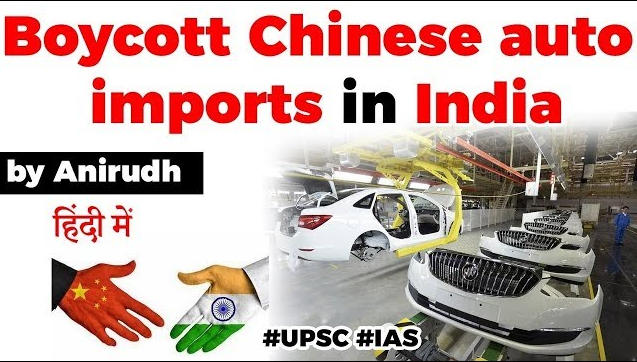Table of Contents

GOVT WANTS TO CURB IMPORTS
- The government has sought detailed information from automobile manufacturers on investments in the country, industry imports and localisation levels across value chains in a bid to curb imports and promote indigenous manufacturing.

REVIEW MEETING ON 21ST AUGUST
- The move follows a meeting between commerce & industry minister Piyush Goyal and senior auto industry representatives on August 13 to deliberate on possibilities of increasing localisation in the automotive sector, which was followed up with a review meeting on Friday, where 24 sectors were reviewed.

CHINA AGAIN

- China is India’s largest supplier of auto parts.
- In 2018-19 India imported auto components worth USD 17.6 billion, of which 27 per cent (USD 4.75 billion) were from China.
WHAT DO WE IMPORT?
- The major component imports from China include drive transmission and steering parts, electronic and electrical items, cooling systems, suspension and braking parts.

AUTOMOTIVE MISSION PLAN
- The industry said if it could attain the target of selling 65 million vehicles annually by 2026 as outlined in the Automotive Mission Plan, it will give it scale required for a very high level of localisation.

GOVT WISHES TO INCREASE LOCALISATION
- “There is a lot of pressure. The government has been holding review meetings every fortnight to look at ways to increase localisation levels not only at the level of original equipment manufacturers (OEMs) but also their tier-I and tier-II vendors.. The minister understands sourcing is top-down and has asked vehicle makers to submit the required data,” an industry executive said on condition of anonymity.

- “Everybody knows that importing products over time actually becomes more and more expensive as the rupee gets weaker. If you were importing something 10 years ago, the same product today will cost 60-70 per cent higher… “So it is not really in anybody’s commercial interest to continue to import, you import because you really have little choice in the matter,”
- “The answer to the sentiments which are being expressed is to make Indian manufacturing much more competitive, much more deeper, much more widespread. What the Prime Minister has said about ‘Atmanirbhar’ means exactly that. If you start making more products in India at competitive prices, people will not import those products.”
Latest Burning Issues | Free PDF






















 WhatsApp
WhatsApp